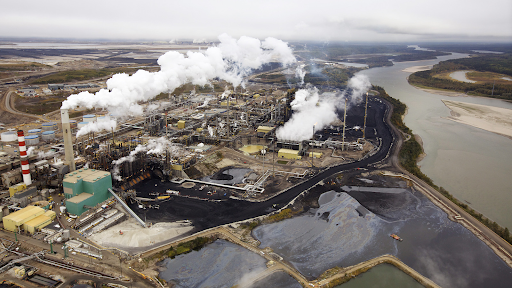There has long been concern surrounding the environmental impacts of extracting oil from Alberta’s Athabasca oil sands, the world’s third largest oil reserve. According to a McGill-led study published in Environmental Pollution, contamination from the Athabasca oil sands is impacting the weather patterns of nearby regions. The study was led by Parisa Ariya, a professor in the Departments of Chemistry and Atmospheric and Oceanic Sciences. Ariya worked with McGill PhD candidate Rodrigo Rangel-Alvarado, as well as other collaborators from the Université de Montréal, the University of Alberta, and Environment and Climate Change Canada.
The researchers found that snow from areas surrounding the oil sands had much higher concentrations of particulate matter than snow from downtown Montreal. The atmospheric pollutants near the oil sands were also more efficient at ice nucleation—a process involved in the formation of clouds—than dust particles normally found in the atmosphere. This is because snow-borne particles from the Athabasca oil sands region have a higher mean freezing temperature than mineral dust.
Snow from areas surrounding the Athabasca oil sands also had a high concentration of particles greater than 100 nanometres in size, two orders of magnitude higher than snow from Montreal. Additionally, most concentrations of metals, including chromium, nickel, copper, arsenic, selenium, cadmium, and lead, were higher in snow samples taken near the oil sands.
Ariya mentioned that there are feedbacks between air pollution, weather, and climate, which affect how pollution-induced changes to weather patterns can interact with other climate change impacts. Aerosols affect cloud properties such as the initiation, frequency, intensity, and quantity of precipitation, and can alter natural processes, such as floods and droughts.
“Climate change is known to affect urban pollution, which is the main source of climate change driving factors,” Ariya wrote in an email to The McGill Tribune. “Similarly, the weather conditions impact air pollution, and weather, as we show[ed] in this study, is also impacted by air pollution. In short, these three processes are linked.”
Moreover, the ability of aerosols from the oil sands to be captured in clouds means that these pollutants can be spread to other areas through precipitation, causing damage to ecosystems, wildlife, and public health. Ariya cited reports by the Intergovernmental Panel on Climate Change (IPCC) and World Health Organization (WHO), although she noted that these intergovernmental organizations recognize the need for further research. She described how the impacts of air pollutants are not completely understood, as scientists still have to do further research into the physicochemical characteristics of aerosols, such as size and composition, to understand how they interact with clouds.
“The [IPCC and WHO] concurred that particulate air pollutants are their utmost knowledge gap,” Ariya wrote. “Air pollution is linked to eight million premature deaths worldwide every year.”
Despite the lack of knowledge on health impacts of particulate air pollutants, emissions from the Athabasca oil sands operations have been linked to health risks, such as increased likelihood of developing cancer and respiratory problems.
“I think that we opened up a closed door to show that anthropogenic airborne nanoparticles can play [a] key role in weather processes, which [has] not [been] considered before,” Ariya wrote. “It builds […] on our leading contributions on air and snow nano-emerging compounds in urban centres or other polluted sites, such as oil sands covered in this study, and their importance in both health and climate research.”
In the meantime, Ariya’s lab is conducting further research to explore the effects of other major industrial pollutants. The lab is also developing novel sustainable technology for air and water pollution remediation, as well as for the detection of gaseous and particulate matter, which will play an important role in tackling the mounting problems associated with anthropogenic pollution.








